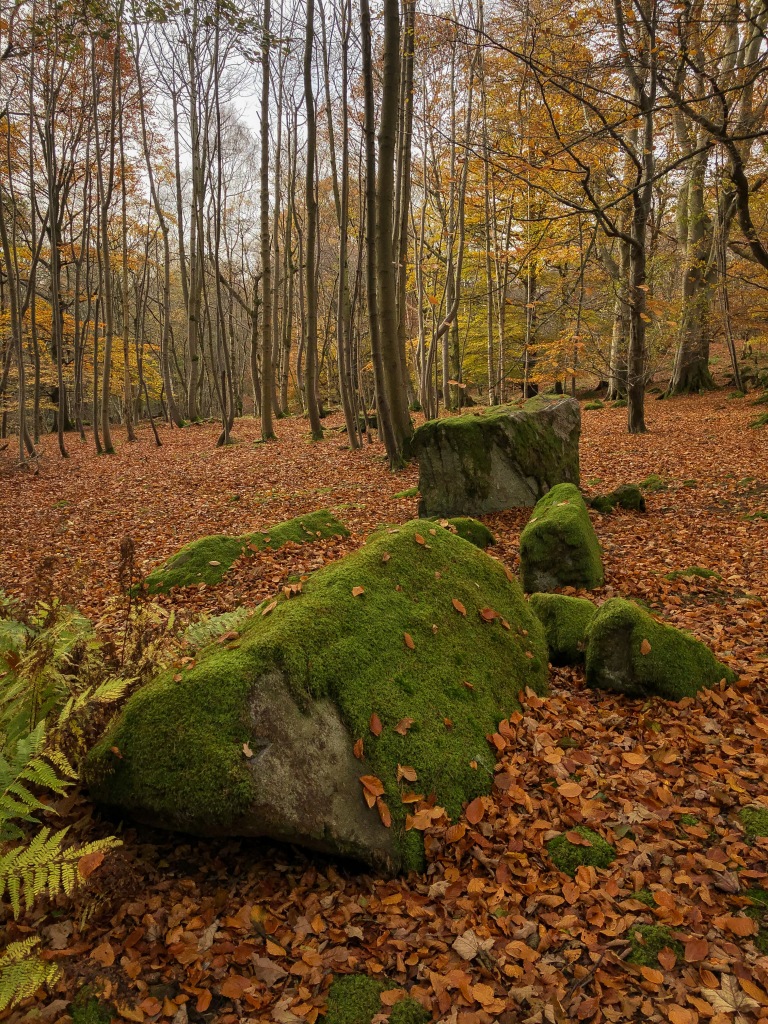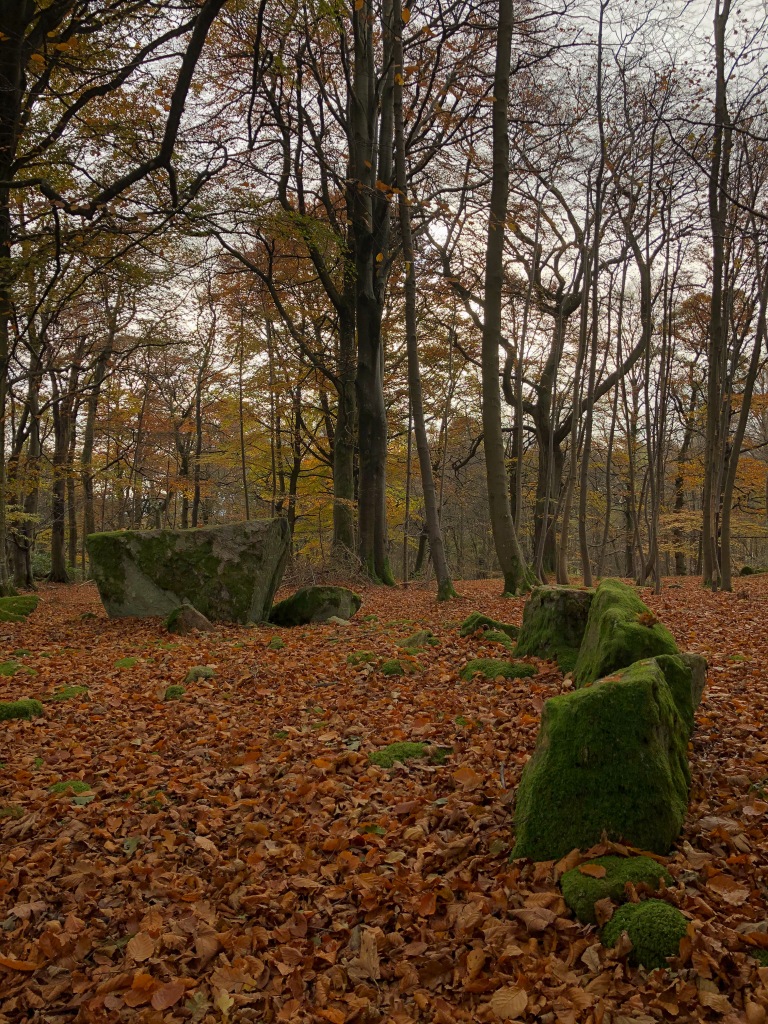…in my limited opinion!
I’ve been to at least nine of the recumbent stone circles in Aberdeenshire and for me there are definitely three stand out favourites. These might not be the ‘cleanest’ examples of recumbent circles but they’re all circles that feel special to me.
Just so we’re all on the same page, a recumbent stone circle has a large stone lying on it’s side (the recumbent) which has two large standing stones either side of it (the flankers or flanking stones). Smaller stones radiate out from the recumbent and the flankers to form a circle. Recumbent stone circles are unique to Aberdeenshire in Scotland, and Cork and Kerry in the South-West of Ireland. There are thought to be about 70 recumbent stone circles in Aberdeenshire so I have a fair few more to visit! It’s not really known why they exist, but it has been hypothesised that they were part of rituals related to the moon. To be fair they were constructed in the Neolithic / bronze age period around 4500 years ago when written history wasn’t really a big thing!
So, in no particular order, my favourite stone circles…so far!
Binghill
I feel like this wouldn’t be on many people’s top three, but for me it was all about the journey and the atmosphere. There aren’t really any published directions or signs to Binghill stone circle and as we didn’t know which way to come from or where to park, we obviously picked the most difficult route! We ended up asking a really lovely chap who was busy renovating a Victorian house, he told us all about the trees in the area, the history and of course he told us which way to go to get to the circle. Even armed with that information it was a bit of a scramble to get there. We went in the middle of Autumn so when we arrived the remaining stones were cushioned in red and orange leaf litter. It was unbelievably pretty. This is only a very small recumbent stone circle, about 11m in diameter. It’s thought that there were once ten stones, but only seven remain. Four, including the flankers, have fallen and several are no longer in their original place. It’s a bit of a mess, but maybe because of the disruption, Binghill is the perfect place to sit and think about just how much time has passed since the stones were originally placed and try to get your head around how much has happened since. If you want to see a clean and classic example of a recumbent stone circle then this is not it, but if you want somewhere to contemplate your own existence then I cannot recommend Binghill stone circle enough!
I’ve actually written about Binghill in another blog about all the castles and megalithic sites between Aberdeen and Balmoral. If you’re interested you’ll find that blog here.
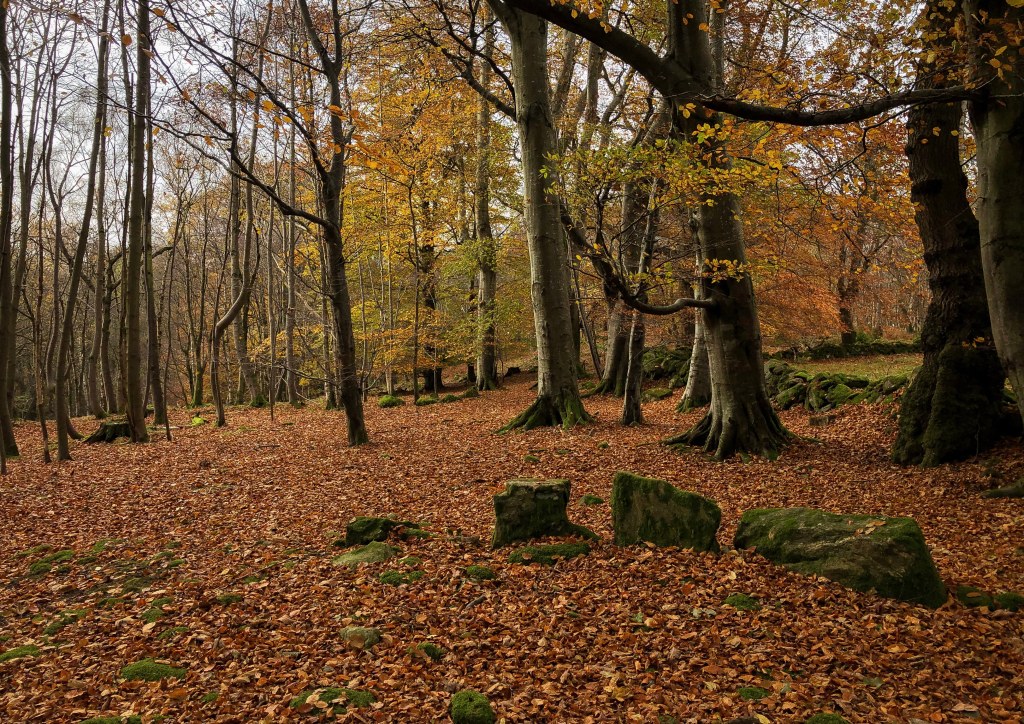
Loanhead of Daviot
This stone circle has so much going on and that’s why I love it. Firstly, there’s a large recumbent stone circle spanning about 20 metres. The recumbent stone has actually been split into two through freeze / thawing action, which is just remarkable, and there are eight standing stones as well as two large flankers. Those eight stones are graded in height and a couple of them have cup-marks on their surfaces, which are a little tricky to locate at first. What were these for and did this mean that those stones were once lying flat and used for something else? Who knows?! In the centre of the circle is a cairn, which makes this circle really special. Beneath this cairn, charcoal, pottery, human bone fragments (both child and adult), flints and traces of burning have been found. All of this suggests that the circle was used a long time after it’s original purpose faded into pre-history.
Secondly, directly next to this large recumbent circle is another circular structure which marks the remains of a stone enclosure with two entrances. This marks a bronze age cremation cemetery. An excavation in the 1930s revealed the remains of a 40 year old bronze age man and it was considered unusual that he was left there intact whilst other bodies were burned in the same area. It’s thought that the recumbent circle was an area used by a large community for many years, but that the smaller bronze age area was used by one or a few families over a much shorter period of time. Whatever brought later peoples to the area, they clearly venerated the circle and that to me is so exciting and kind of magical.

Loudon Wood
Loudon wood circle, also known as Pitfour stone circle, is a little bit illusive…or at least sounds like it should be from it’s google reviews. We actually found it very easily with the help of a map and some instructions from http://leshamilton.co.uk/megaliths/loudenwood.htm. Even though we took a fairly direct route to it, it still involved veering off the obvious paths and into the dark, tightly packed conifers to make our way slowly to the clearing that holds the stone circle. It was a windy day, full of creaking trees and chirruping birds, but as soon as we reached the circle everything seemed to fall silent. I guess that’s hardly surprising, but there was a peace to the area that made it feel kind of enchanted. The circle isn’t complete, but there’s a large recumbent stone lying between two flankers (one of which is no longer standing) and four other stones that make up a large circle about 18m in diameter. According to Canmore it is estimated that it probably took around 40 adults to move the recumbent into place. It might not be well looked after, complete or easy for everyone to find, but this circle undoubtedly has atmosphere. I didn’t want to leave.
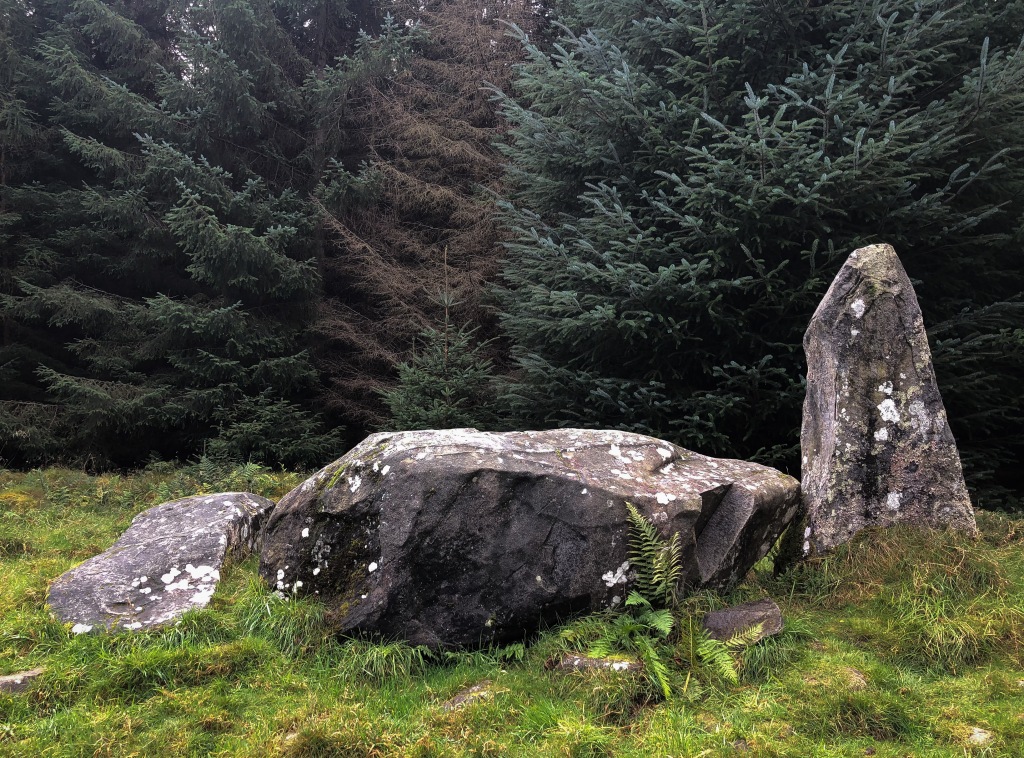
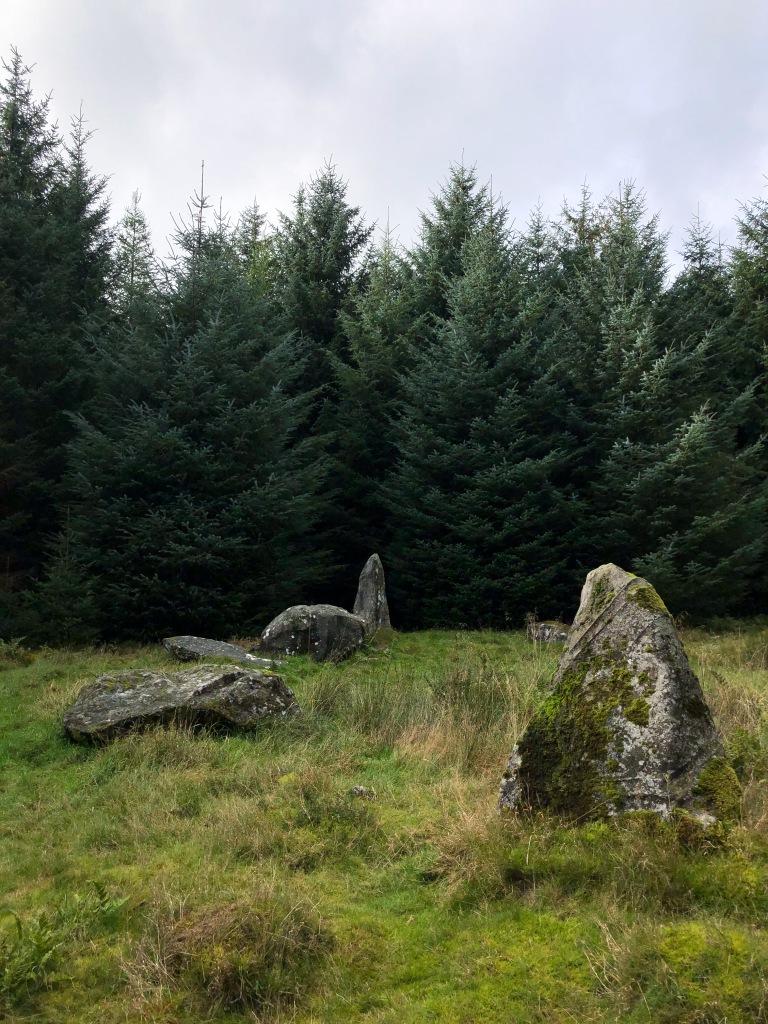
So, these are my favourites based on feelings and emotion, but if you’re looking for a nice, clean, classic example of a recumbent stone circle then I would suggest either Tomnaverie or East Aquhorthies. …happy megalith hunting!
